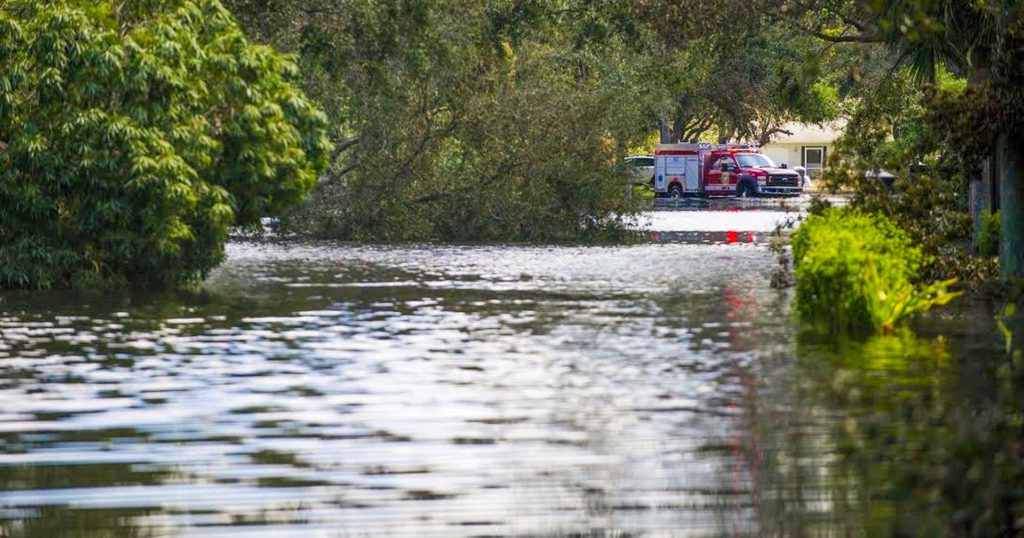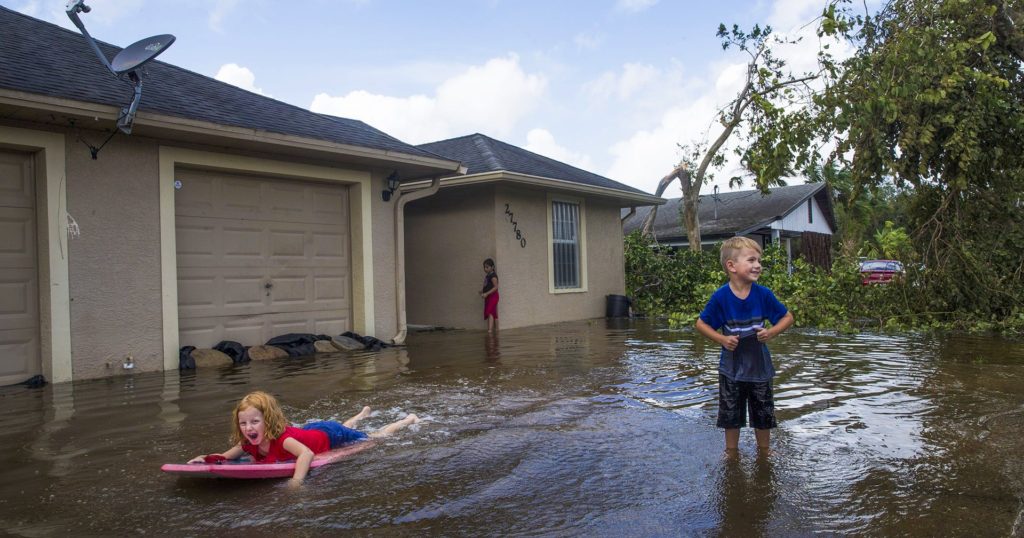Overview of Flood Insurance
Flooding is the most common and costly natural disaster in the United States, causing billions in economic losses each year. According to the National Flood Insurance Program (NFIP), 90% of all natural disasters in the United States involve flooding.
There is no coverage for flooding in standard homeowners or renters policies or in most commercial property insurance policies. Coverage is available in a separate policy from the National Flood Insurance Program (NFIP) and from a few private insurers.
How it Works
The NFIP is administered by FEMA, part of the Department of Homeland Security. Flood insurance was initially only available through insurance agents who dealt directly with the federal program. The direct policy program has been supplemented since 1983 with a private/public cooperative arrangement, known as “Write Your Own,” through which a pool of insurance companies issue policies and adjust flood claims on behalf of the federal government under their own names, charging the same premium as the direct program. Participating insurers receive an expense allowance for policies written and claims processed. The federal government retains responsibility for underwriting losses. Today, most policies are issued through the Write-Your-Own program but some non-federally backed coverage is available from the private market.
The NFIP is expected to be self-supporting in an average loss year, as reflected in past experience. In an extraordinary year, as Hurricane Katrina demonstrated, losses can greatly exceed premiums, leaving the NFIP with a huge debt to the U.S. Treasury that it is unlikely to pay back. Hurricane Katrina losses and the percentage of flood damage that was uninsured led to calls for a revamping of the entire flood program.
Flood adjusters must be trained and certified to work on NFIP claims. NFIP general adjusters typically re-examine a sample of flood settlements. Insurers that fail to meet NFIP requirements must correct problems; otherwise they can be dropped from the program.

What’s in a Typical Flood Policy
Flood insurance covers direct physical losses by flood and losses resulting from flood-related erosion caused by heavy or prolonged rain, coastal storm surge, snow melt, blocked storm drainage systems, levee dam failure or other similar causes. To be considered a flood, waters must cover at least two acres or affect two properties. Homes are covered for up to $250,000 on a replacement cost basis and the contents for up to $100,000 on an actual cash value basis. Replacement cost coverage pays to rebuild the structure as it was before the damage. Actual cash value is replacement cost minus the depreciation in value that occurs over time. (Excess flood insurance is available in all risk zones from some private insurers for NFIP policyholders who want additional coverage or where the homeowner’s community does not participate in the NFIP.) Coverage for the contents of basements is limited. Coverage limits for commercial property are $500,000 for the structure and another $500,000 for its contents.
To prevent people from putting off the purchase of coverage until waters are rising and flooding is inevitable, policyholders must wait 30 days before their policy takes effect. In 1993, 7,800 policies purchased at the last minute resulted in $48 million in claims against only $625,000 in premiums.
Am I At-Risk of Flooding?
As with other types of insurance, rates for flood insurance are based on the degree of risk. FEMA assesses flood risk for all the participating communities, resulting in the publication of thousands of individual flood rate maps. High-risk areas are known as Special Flood Hazard Areas or SFHAs. You can search these maps using your address to see if you are in one of these SFHAs. As a general rule-of-thumb, if you live in the state of Florida, you are in a flood zone.
Flood plain maps are redrawn periodically, removing some properties previously designated as high hazard and adding new ones. New technology enables flood mitigation programs to more accurately pinpoint areas vulnerable to flooding. As development in and around flood plains increases, run off patterns can change, causing flooding in areas that were formerly not considered high risk and vice versa.
People tend to underestimate the risk of flooding. The highest-risk areas (Zone A) have an annual flood risk of 1 percent and a 26 percent chance of flooding over the lifetime of a 30-year mortgage, compared with a 9 percent risk of fire over the same period. In addition, people who live in areas adjacent to high-risk zones may still be exposed to floods on occasion. Since the inception of the federal program, some 25 to 30 percent of all paid losses were for damage in areas not officially designated at the time of loss as SFHAs. NFIP coverage is available outside high-risk zones at a lower premium.

About the National Flood Insurance Program (NFIP)
Flood damage is excluded under standard homeowners and renters insurance policies. However, flood coverage is available in the form of a separate policy both from the National Flood Insurance Program (NFIP) and from some private insurers.
Congress created the NFIP in 1968 in response to the rising cost of taxpayer-funded disaster relief for flood victims and the increasing amount of damage caused by floods. The NFIP makes federally backed flood insurance available in communities that agree to adopt and enforce floodplain management ordinances to reduce future flood damage. The NFIP is self-supporting for the average historical loss year. This means that unless there is a widespread disaster, operating expenses and flood insurance claims are financed through premiums collected.
The NFIP provides coverage for up to $250,000 for the structure of the home and up to $100,000 for personal possessions. Private flood insurance is available for those who need additional insurance protection, known as an excess coverage, over and above the basic policy or for people whose communities do not participate in the NFIP. Some insurers have introduced special policies for high-value properties. These policies may cover homes in noncoastal areas and/or provide enhancements to traditional flood coverage. The comprehensive portion of an auto insurance policy includes coverage for flood damage.
In 2016 the National Flood Insurance Program (NFIP) put a reinsurance program in place to better manage the losses it incurred from major events by transferring exposure to reinsurers. In January 2017 FEMA transferred $1.02 billion of the NFIP’s financial risk to 25 reinsurers. The NFIP recovered the entire $1.02 billion based on Hurricane Harvey flood losses. The NFIP returned to the private reinsurance market in 2018, paying $235 million for $1.458 billion in coverage from a single flood event from 28 reinsurers. The structure of 2018’s reinsurance changed from 2017 when reinsurers covered 26 percent of the $4 billion in losses after NFIP retained the first $4 billion in losses. For 2018 losses reinsurers will pay 18.6 percent of the first $2 billion of losses over $4 billion and 54.3 percent of the next $2 billion over $6 billion, up to a maximum of $1.46 billion. In both 2017 and 2018, the NFIP got no protection for the first $4 billion of any flood event. In January 2019 the NFIP obtained $1.32 billion in reinsurance from 28 carriers, slightly less than the $1.46 billion obtained in 2018. The reinsurance would cover losses above $4 billion from a single event, at a premium cost of $186 million. The reinsurance program would cover 14 percent of losses between $4 billion to $6 billion; 25.6 percent of losses between $6 billion and $8 billion; and 26.6 percent of losses between $8 billion and $10 billion.
As of April 2019, FEMA has secured $800 million of additional funds from catastrophes bonds. In August 2018 FEMA launched its first catastrophe bond to transfer risk from the NFIP to the capital markets. It was the first catastrophe bond to provide reinsurance coverage solely for flood risks. FEMA obtained $500 million of reinsurance protection from the FloodSmart Re Ltd. (Series 2018-1 issuance). The transaction, from FloodSmart Re, which is a Bermuda domiciled special purpose insurance vehicle, will cover NFIP losses from flood events that are directly or indirectly caused by a named storm event impacting the United States including Puerto Rico, the U.S. Virgin Islands and the District of Columbia. In March 2019, FEMA secured a second catastrophe bond seeking $300 million from the FloodSmart Re Ltd. Series 2019-1. The program will extend over three years and the terms are identical to the August 2018 catastrophe bond deal.
According to Artemis, the latest catastrophe bond brings total capital markets backed reinsurance coverage to $800 million. When added to traditional reinsurance purchased in January 2019, this brings NFIP protection to $2.12 billion for the 2019 named storm and hurricane season.
Congress must periodically renew the NFIP’s statutory authority to operate. In the unlikely event the NFIP’s authorization lapses, claims would still be paid but the NFIP would stop selling and renewing policies (more details here.)
On March 18, 2019, the Trump administration announced plans to reform the NFIP with a shift to fully risk-based pricing of flood insurance. FEMA said the program would begin to assess properties individually, using several variables such as hurricane rainfall, coastal surges and proximity to bodies of water, rather than applying a single formula for an entire flood zone. FEMA’s current system calculates rates based on whether a home falls in a designated flood zone, and since higher-valued properties are more likely to hit the $250,000 insurance cap, lower-value homes are paying proportionately more than higher-value homes. The reformed system would change that as well as potentially drive more flood risk into private reinsurance and risk markets. FEMA will announce the new rates on April 1, 2020, and it will implement the new system on October 1, 2020.
The 2018 Insurance Information Institute Pulse survey found that 15 percent of American homeowners had a flood insurance policy, up from 12 percent who had the coverage in 2016, as shown in the following chart.